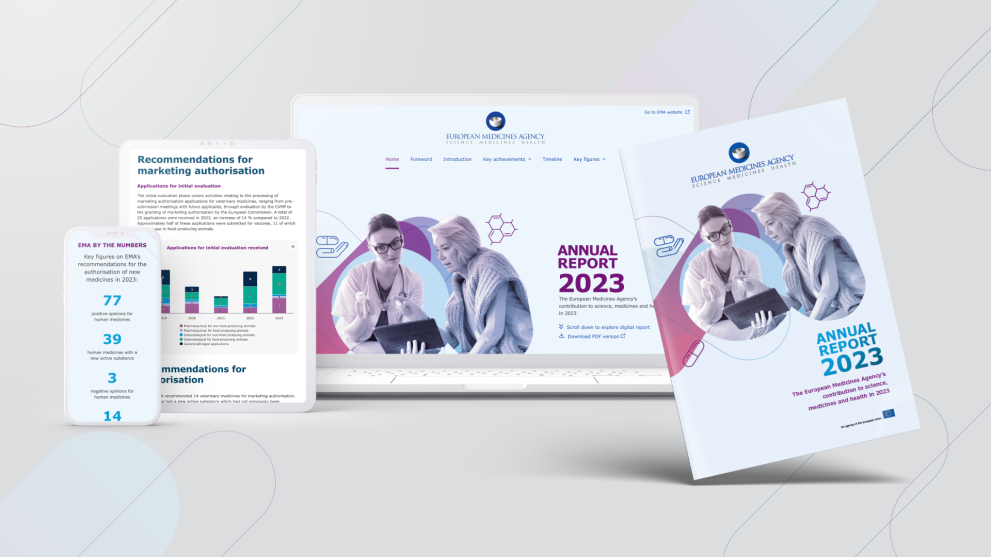EMA supporting materials
The European Medicines Agency (EMA) has put together key materials providing stakeholders with quick access to information about EMA's work and its recent initiatives.
Corporate
Check our interactive timeline to learn about:
For more information on EMA's role, see:
EMA and Heads of Medicines Agencies (HMA) identify shared challenges, goals and priorities in five-year strategy documents. Their collaboration provides strategic direction to the work of the European medicines regulatory network.
For more information on EMA's work with the HMA, see:
To find out more, see:
Explore our Digital annual report 2023 to learn about EMA's activities during 2023.
The report is available in two formats:

Falsified medicines are fake medicines that pass themselves off as real, authorised medicines.
In July 2011, the European Union (EU) strengthened the protection of patients and consumers by adopting Directive 2011/62/EU on falsified medicines for human use.
According to this directive, only licensed pharmacies and approved retailers are allowed to offer medicines for sale, including legitimate sale via the internet.
EMA is working closely with its partners on the implementation of these laws.
For more information, see:
Transparency is an important feature of EMA's operations.
As any public authority, EMA aims to be as open as possible about how it works and makes decisions.
One instance of EMA's transparency is that it publishes information on human medicines at various stages of their life cycle.
For more information, see:
EMA runs the PRIority MEdicines (PRIME) scheme to enhance support for the development of medicines that target an unmet medical need.
PRIME is voluntary and based on sustained interaction and early dialogue with developers of promising medicines.
This serves to optimise development plans and speed up evaluation, enabling these medicines to reach patients earlier.
For more information, see:
The European medicines regulatory network has been at the forefront of the fight against COVID-19. It has held a crucial role in the evaluation and monitoring of medicines, including vaccines.
EMA and HMA issued a joint report reviewing the network's response to COVID-19 and highlighting lessons learned for future health crises:
Learn about the Clinical Trials Regulation, including how it overhauled the oversight of clinical trials in the EU, and EMA's new responsibilities in this area:
Improving the availability of medicines authorised in the EU is a key priority for EMA.
Learn more about how EMA works together with the Member States in this area:
See EMA's user guide for micro, small and medium-sized enterprises:
To find out more, see:
Pharmacovigilance refers to the science and activities for the detection, assessment, understanding and prevention of adverse effects or any other medicine-related problem.
Learn how EMA coordinates and support the pharmacovigilance in the EU:
EMA has a number of important tasks and responsibilities relating to the development of paediatric medicines, granted by the EU Paediatric Regulation.
These responsibilities enable EMA to stimulate research into the uses of medicines in children and to lead to their authorisation in all age groups.
For more information, see:
EMA is working closely with health technology assessment (HTA) bodies.
For more information, see:
EMA and patients and healthcare professionals have been actively interacting since the creation of EMA in 1995.
This cooperation was extended to include consumer groups with an interest in medicines.
For more information, see:
A central pillar in EMA's strategy to protect public health is the strengthening of collaboration at international level to promote harmonisation of regulatory requirements, sharing of information and addressing common challenges.
For more information, see:
EMA works with the European Commission and other EU partners in implementing the Veterinary Medicinal Products Regulation (Regulation (EU) 2019/6) which sets out the rules on the authorisation and use of veterinary medicines in the EU.
For more information, see: